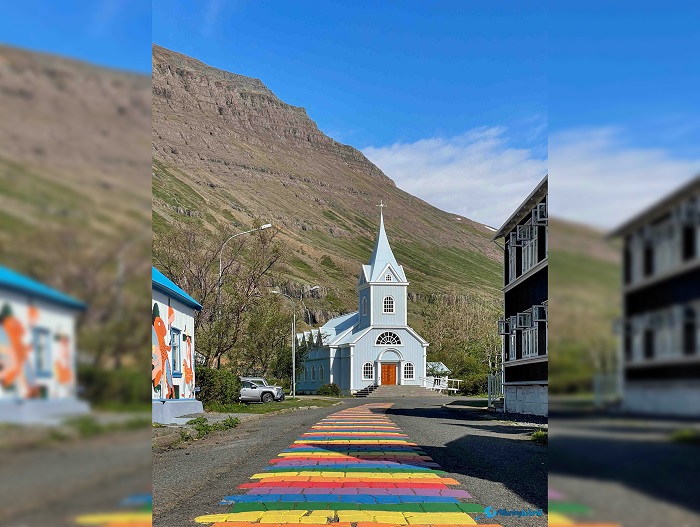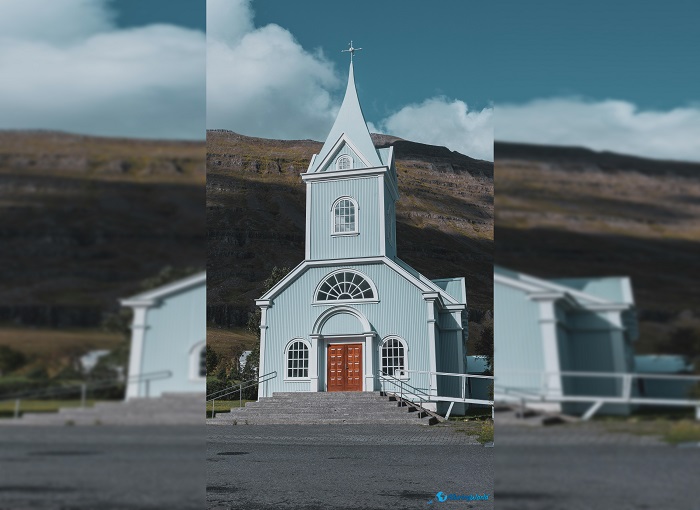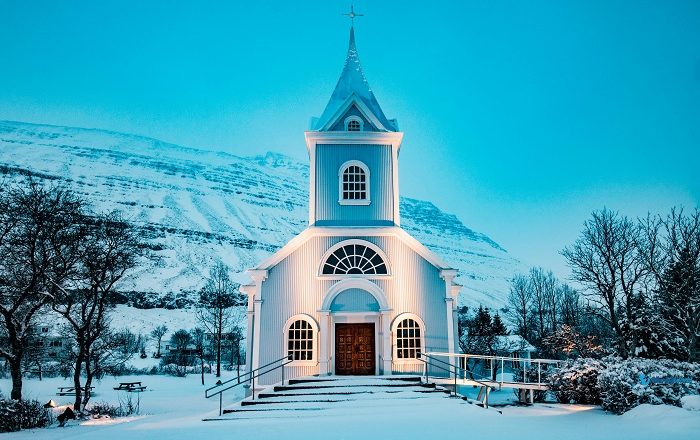Seyðisfjörður Church, locally known as Seyðisfjarðarkirkja, is a picturesque and remarkable church located in the charming town of Seyðisfjörður, in the eastern part of the Múlaþing Municipality, on the eastern part of the island nation of Iceland. As this church is considered to be one of Iceland’s most picturesque landmarks, this small but visually striking church, often referred to as the “Blue Church” due to its distinctive pale blue exterior, stands out against the dramatic backdrop of mountains and fjords, making it a beloved symbol of the town and a popular subject for photographers and visitors alike.
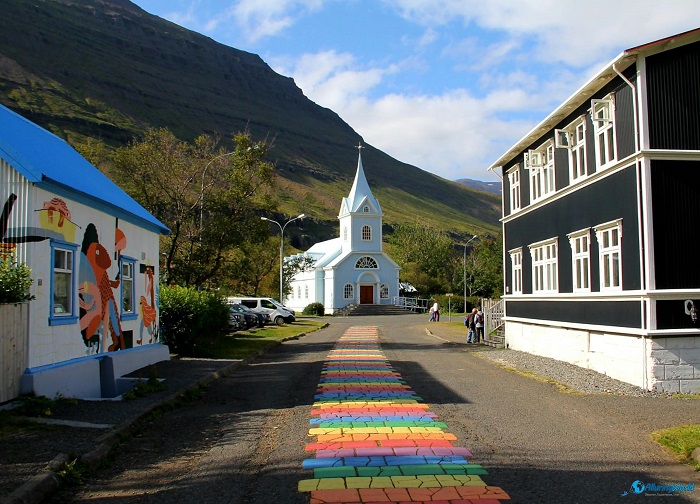
The history of Seyðisfjörður Church dates back to the late 19th century, as the original church was built in 1874 in a different location and was much smaller than the current structure. However, in 1920, the decision was made to build a new, larger church to accommodate the growing population of Seyðisfjörður. This town had become a significant center for commerce and fishing. The new church was constructed using imported timber, a material that was. The design of the church reflects a blend of Gothic and traditional Icelandic architectural styles, with pointed arches, a steeply pitched roof, and an elegant bell tower that adds to its charm.
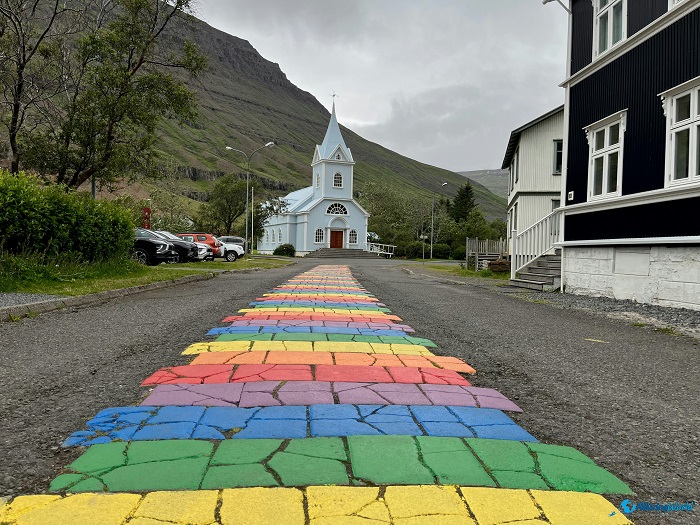
The construction of Seyðisfjörður Church was a community effort, with townspeople contributing both labor and resources to ensure its completion, and the choice of location, close to the town center and overlooking the fjord, was deliberate, symbolizing the church’s central role in the spiritual and social life of the community. The church was consecrated in 1922, and since then, it has served not only as a place of worship but also as a cultural hub for the town. Throughout the years, the church has hosted numerous concerts, weddings, and community events, cementing its importance in the lives of the locals.
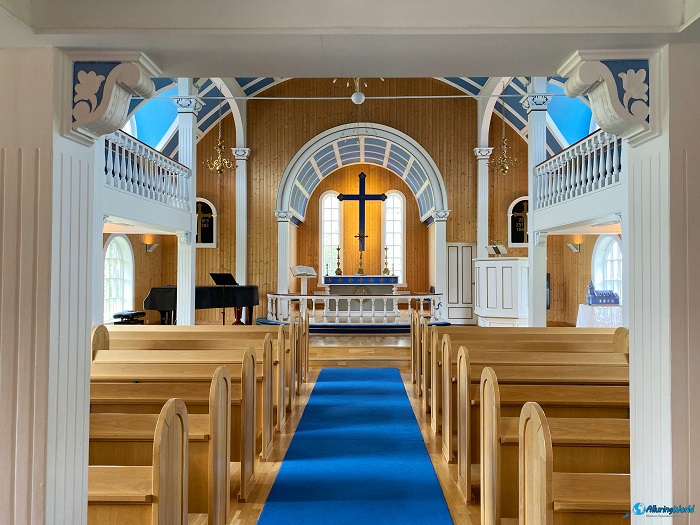
As mentioned above, one of the most striking features of Seyðisfjörður Church is its beautiful blue exterior, which contrasts strikingly with the surrounding natural landscape. The color choice was intended to complement the hues of the fjord and the sky, creating a harmonious visual effect that is both serene and captivating, and in addition to this the inside is equally charming, with simple yet elegant wooden pews, stained glass windows, and a lovely pipe organ that fills the space with music during services and special events. It needs to be noted that the interior reflects the traditional Icelandic approach to church design, unadorned but profoundly peaceful, creating a space conducive to reflection and community gathering.
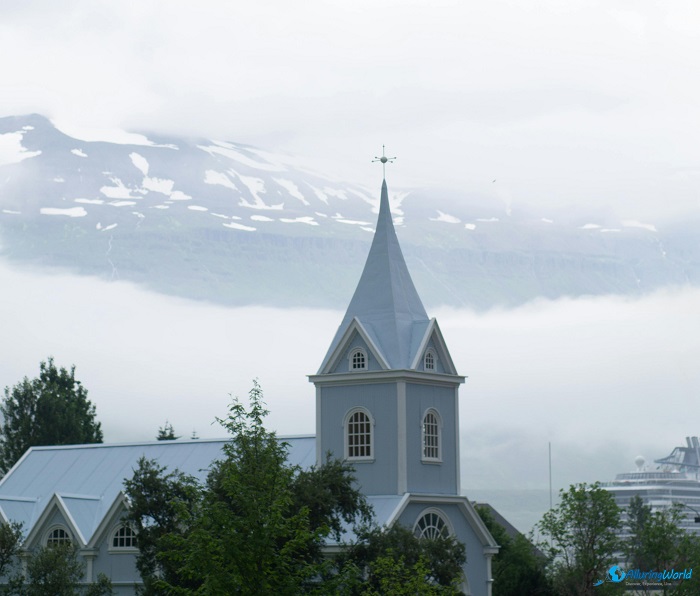
The importance of Seyðisfjörður Church has evolved over the decades, as it initially was a vital spiritual center for the town’s residents, who were predominantly involved in fishing and trade, but as Seyðisfjörður developed, particularly during the early 20th century when it became a key port for the herring industry, the church became a symbol of stability and continuity amidst the changes brought by modernization. Today, while the church still serves as a place of worship, its role has expanded to become a cultural and historical landmark that attracts visitors from around the world. It is also an integral part of the town’s identity, featuring prominently in festivals and cultural events, such as the annual LungA Art Festival.
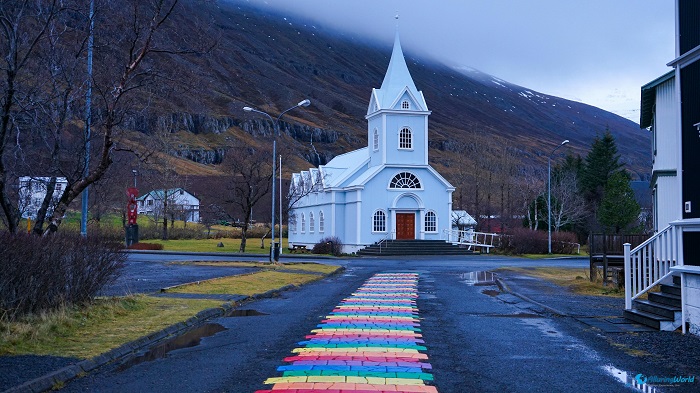
Perhaps another interesting feature for which it became quite famous is the colorful rainbow that leads up to the front of the church. This rainbow is a vibrant pathway that leads up to the iconic blue structure, creating a striking contrast against the surrounding Icelandic landscape, symbolizing hope, diversity, and the community’s welcoming spirit, inviting visitors to embrace the charm of Seyðisfjörður. The rainbow, with its bright hues, enhances the serene beauty of the church, making it a captivating and joyful sight in the quaint fjord town.
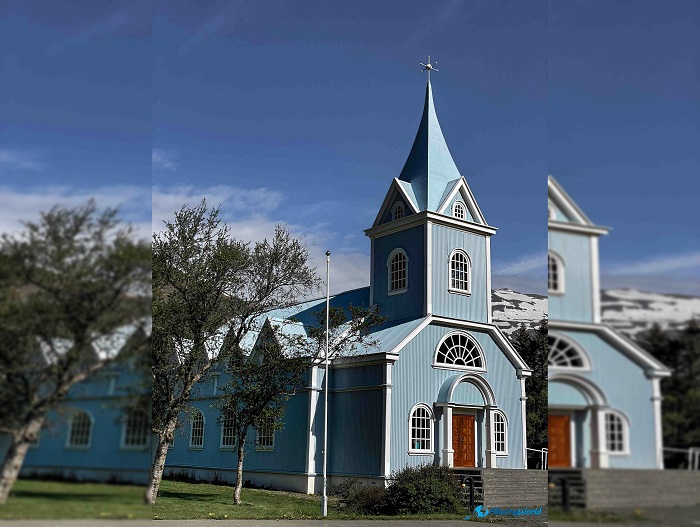
For visitors interested in experiencing Seyðisfjörður Church, the best time to visit is during the summer months, from June to August, when the weather is most favorable, and the town is alive with activity. The church is open to visitors year-round, though access may be limited during services or private events. To reach Seyðisfjörður, travelers can take a scenic drive from Egilsstaðir, the largest town in the region, which is about 27 km (17 mi) to the west of the small town. The road to Seyðisfjörður winds through the mountains and offers breathtaking views of the fjord and surrounding landscapes, making the journey an unforgettable part of the experience.
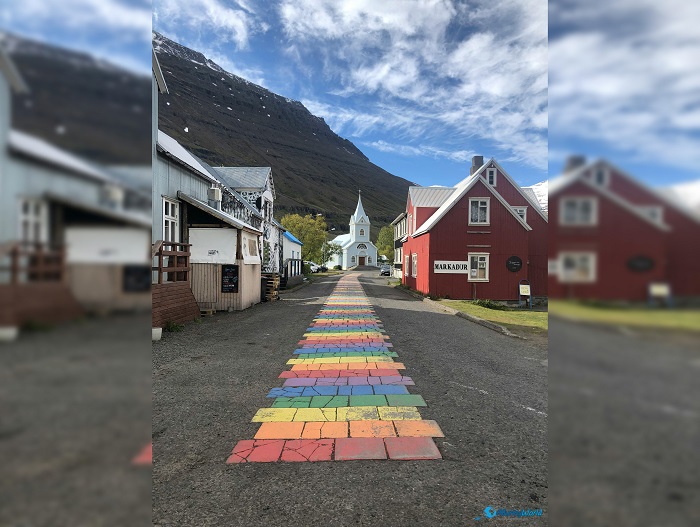
Once in Seyðisfjörður, the church is easily accessible on foot, as the town is small and walkable, so visitors can take their time exploring the church’s interior, appreciating its simple beauty, and perhaps attending a service or concert if their visit coincides with one. The surrounding area also offers plenty of opportunities for exploration, including hiking trails, waterfalls, and the vibrant local art scene that Seyðisfjörður is known for.
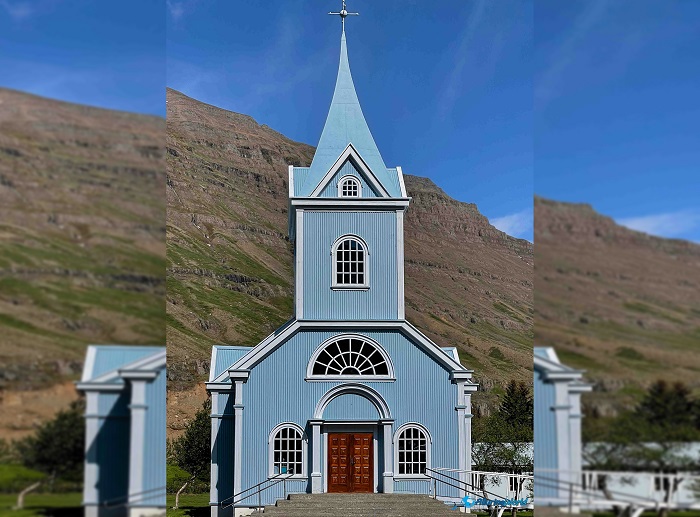
All in all, Seyðisfjörður Church is more than just a religious building; it is a cultural icon and a symbol of the town’s rich history and community spirit. Its unique architecture, picturesque setting, and enduring significance make it a must-visit destination for anyone traveling to Iceland’s East Fjords. Whether you are drawn by its historical value, its aesthetic appeal, or the tranquility it offers, Seyðisfjörður Church is a place where the beauty of nature and the simplicity of human craftsmanship come together to create a truly special experience.
